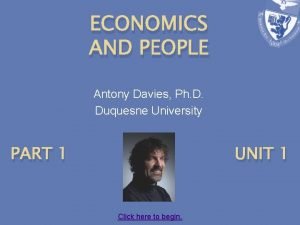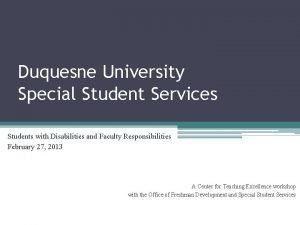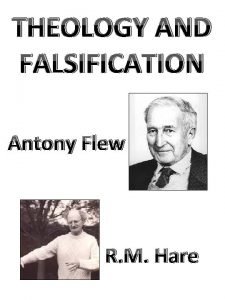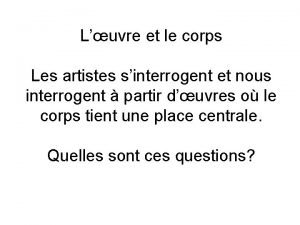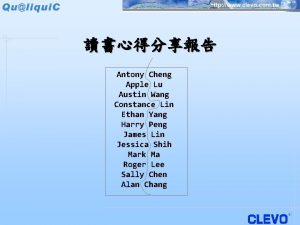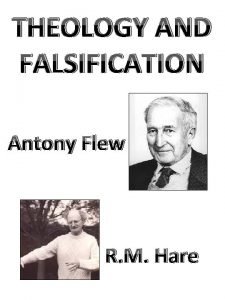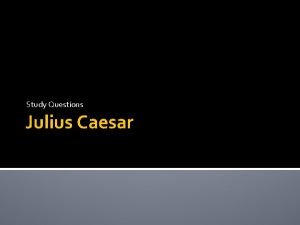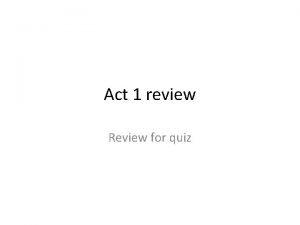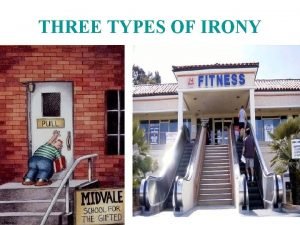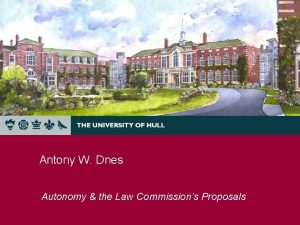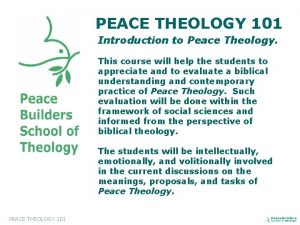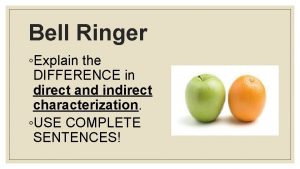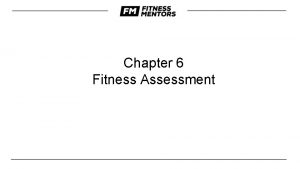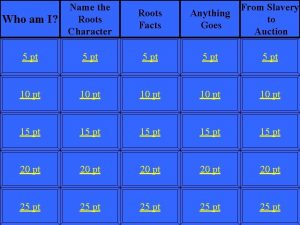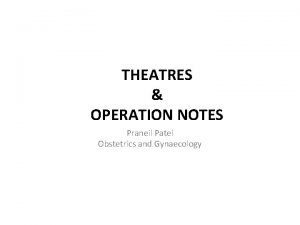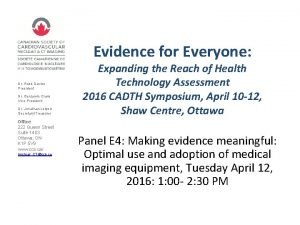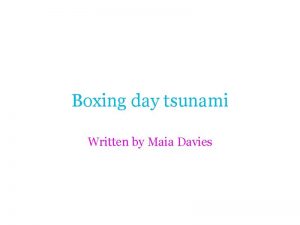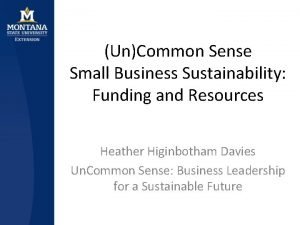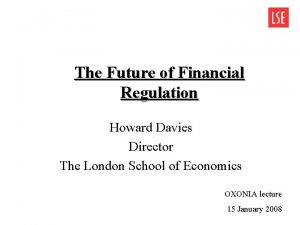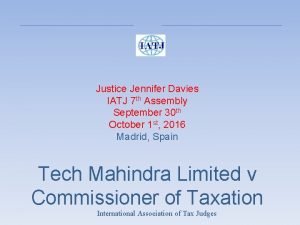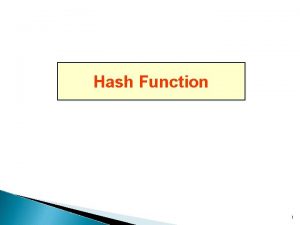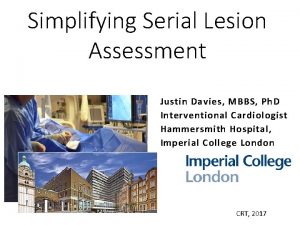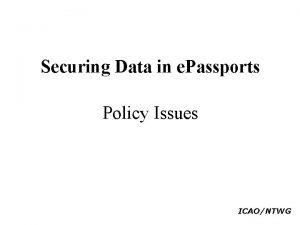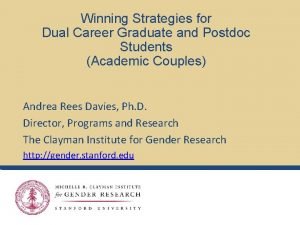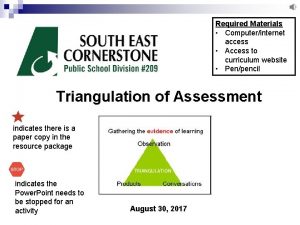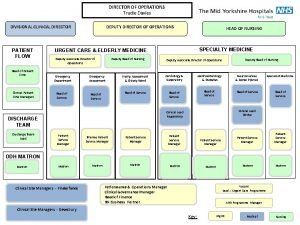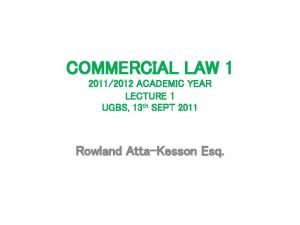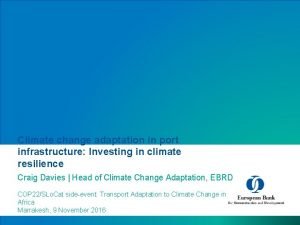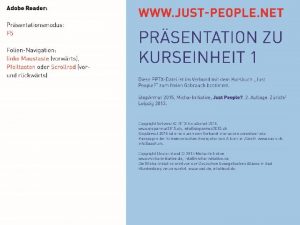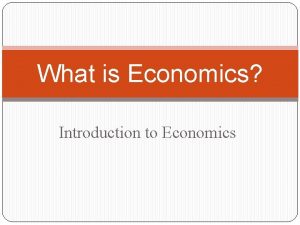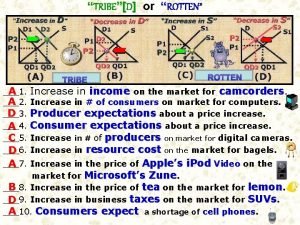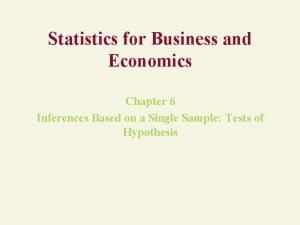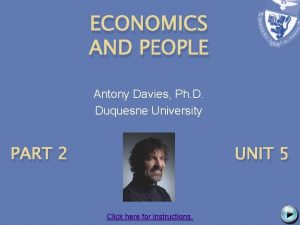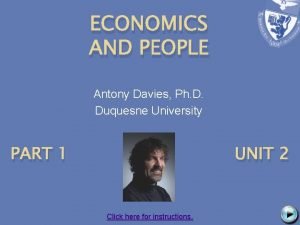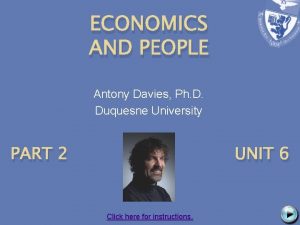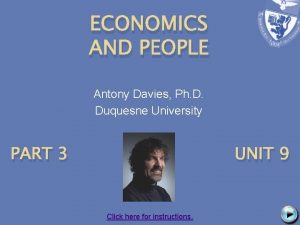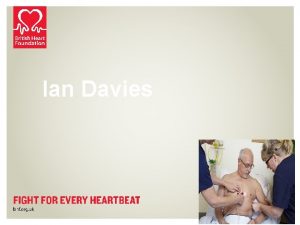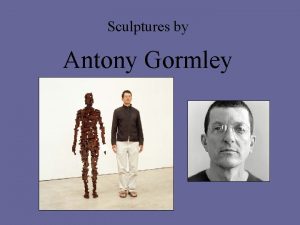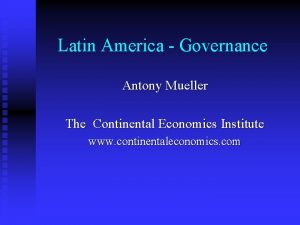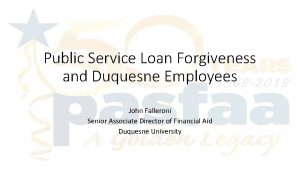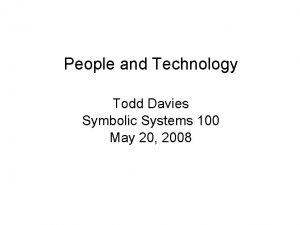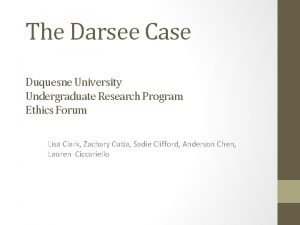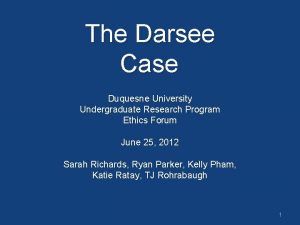ECONOMICS AND PEOPLE Antony Davies Ph D Duquesne










































































- Slides: 74

ECONOMICS AND PEOPLE Antony Davies, Ph. D. Duquesne University PART 1 UNIT 1 Click here to begin.

INSTRUCTIONS • Navigation through the course will occur by clicking on the following action buttons located in the lower right corner of each screen: The HOME button will be placed in the center of each slide and will bring you to the Table of Contents for further navigation. The NEXT and BACK buttons will move you through the course content. The EXIT button will be placed at the end of each unit and will exit the unit and return you to the course menu.

INSTRUCTIONS • This course is meant to be self-paced, though there will be opportunities to interact with your local and global JPIC groups. • Course content and activities should be completed in the order that they are presented to maximize student success. • The Table of Contents will be your starting point for each Unit

ACTIVITY ICONS • • Each type of course activity has a unique icon located in the upper right corner of the screen. In this course you will: Create doc Local discussion Reflect Read online Global discussion Watch video Quiz/test Online journal

COURSE INTRODUCTION • Course Guide

PART 1: ECONOMICS AND INDIVIDUALS UNIT 1: FREEDOM, RESPONSIBILITY, AND ECONOMICS

UNIT 1: FREEDOM, RESPONSIBILITY, AND ECONOMICS The purpose of this unit is: • To demonstrate that traditional labels of “liberal” and “conservative” are ambiguous and sometimes contradictory; • To show that a more accurate way to describe socio-economic attitudes is by describing the degree of personal freedom humans can (or should) exercise in the social and economic spheres; • To illustrate that social priorities are frequently mutually incompatible and that they change over time.

UNIT 1: FREEDOM, RESPONSIBILITY, AND ECONOMICS This unit is divided into several sections. Start with the micro-lecture. Then proceed onto each section. You can click on a link below to navigate to the section where you had recently left off. Micro-Lecture: Introduction Section 1: Your Outlook Section 2: Liberalism and Conservatism Section 3: Personal Freedom Section 4: Discussion Unit Summary & Assignment

MICRO-LECTURE A View the Lecture (01: 33) Read the Text of the Lecture

MICRO-LECTURE B View the Lecture (01: 17) Read the Text of the Lecture

SECTION 1 YOUR OUTLOOK

Approaches to dealing with economic policy issues are shaped by people’s views of the appropriate relationship between the state and the individual. The following exercise is meant to reveal your own views on this relationship.

ACTIVITY In the following slides, you see ten statements and you will be asked to indicate whether you agree or disagree with each statement. There are no right or wrong answers. All that matters is that you provide an honest opinion. Answer honestly. You will not be asked to share your results.

You will see a statement and a list of options. 1 2 3 4 Strongly Disagree Neutral Agree 5 Strongly Agree Write down the question number and the option number you select.

Question #1 Military service should be voluntary. 1 2 3 4 Strongly Disagree Neutral Agree 5 Strongly Agree

Question #2 The government should not control radio, TV, the press, or the Internet. 1 2 3 4 Strongly Disagree Neutral Agree 5 Strongly Agree

Question #3 Sex between consenting adults should not be regulated by the state. 1 2 3 4 Strongly Disagree Neutral Agree 5 Strongly Agree

Question #4 Anti-drug laws do more harm than good. 1 2 3 4 Strongly Disagree Neutral Agree 5 Strongly Agree

Question #5 Peaceful people should be allowed to cross national borders freely. 1 2 3 4 Strongly Disagree Neutral Agree 5 Strongly Agree

Question #6 Businesses and farms should operate without government subsidies. 1 2 3 4 Strongly Disagree Neutral Agree 5 Strongly Agree

Question #7 People are better off with free trade than with tariffs. 1 2 3 4 Strongly Disagree Neutral Agree 5 Strongly Agree

Question #8 The government should not impose minimum wage laws. 1 2 3 4 Strongly Disagree Neutral Agree 5 Strongly Agree

Question #9 The government should fund public services with user fees instead of taxes. 1 2 3 4 Strongly Disagree Neutral Agree 5 Strongly Agree

Question #10 Foreign aid should be funded by private entities, not by governments. 1 2 3 4 Strongly Disagree Neutral Agree 5 Strongly Agree

For questions 1 through 5, add up the numbers you wrote for your responses. This is your social attitude score. For questions 6 through 10, add up the numbers you wrote for your responses. This is your economic attitude score. Put these numbers aside. We will return to them later.

SECTION 2 LIBERALISM AND CONSERVATISM

WHAT ARE “LIBERALISM” AND “CONVSERVATISM? ” The terms “liberal” and “conservative” tend to have the opposite meanings in the U. S. versus Europe. Throughout this lecture, we will use the terms as they are used in the United States. In the United States, “liberalism” tends to refer to the use of government solutions to economic problems while “conservatism” tends to refer to the use of market solutions to economic problems.

ACTIVITY Take a few minutes to reflect upon the meaning of “liberalism” and “conservatism” and then write a definition for each. Each definition should be one to three sentences in length.

FORMAL DEFINITIONS: “LIBERALISM” AND “CONSERVATISM” Webster’s Collegiate Dictionary Liberalism is “a political philosophy based on belief in…the essential goodness of the human race, and on the autonomy of the individual, and (stands) for the protection of political and civil liberties. ” Conservatism is “a political philosophy based on tradition and social stability, stressing established institutions, and preferring gradual development to abrupt change. ”

CONTRADICTIONS These definitions are not entirely consistent with political platforms that we observe.

In the U. S. , liberalism’s emphasis on government as the solution to problems is inconsistent with “autonomy of the individual. ” Webster’s Collegiate Dictionary Liberalism is “a political philosophy based on belief in…the essential goodness of the human race, and on the autonomy of the individual, and (stands) for the protection of political and civil liberties. ” Conservatism is “a political philosophy based on tradition and social stability, stressing established institutions, and preferring gradual development to abrupt change. ” Conservatism’s emphasis on individual action as the solution to problems is inconsistent with “stressing established institutions. ”

In 1981, US News and World Report interviewed five “conservative” politicians and five “liberal” politicians. The newspaper asked the liberal politicians to define the term “liberal, ” and asked the conservative politicians to define the term “conservative. ”

Webster’s Collegiate Dictionary Liberalism is “a political philosophy based on belief in…the essential goodness of the human race, and on the autonomy of the individual, and (stands) for the protection of political and civil liberties. ” Representative Ted Weiss (liberal politician) “Liberals believe (that) government has an obligation to provide equal educational and job opportunities for all. To those whose survival requires economic assistance, government should extend a helping hand. Individual liberties and human rights must be safeguarded from and by government. ” Government provision of opportunities and assistance is inconsistent with individual autonomy because the government must regulate and/or tax in order to provide these things.

Webster’s Collegiate Dictionary Conservatism is “a political philosophy based tradition and social stability, stressing established institutions, and preferring gradual development to abrupt change. ” Senator John Tower (conservative politician) “Conservatives have more faith in people than in government institutions, and would keep government out of issues that can be handled in the private sector. ” An emphasis on established institutions is inconsistent with greater trust in people than in institutions.

ACTIVITY You will see a sequence of social and economic issues. Decide whether the issue is one that would be supported by “conservatives” or one that would be supported by “liberals”.

WHAT ISSUES ARE “LIBERAL” AND “CONSERVATIVE? ” Prohibit Prayer in. Health Public School Mandatory Universal Minimum Reduced Pro-Birth Free Prayer Anti-Drugs Trade Wage Control in Taxes Public Care School “Conservative” “Liberal” Interestingly, while we have seen contradictions between the definitions and the claims of “liberalism” and “conservatism”, most people can readily identify a specific issue as being a “liberal” or “conservative” issue. This suggests that there is some consistent underlying reality that the terms (being inconsistent in their definitions and applications) do not adequately capture.

The terms “liberal” and “conservative” are ambiguous. Better terms are: Control vs. Freedom Centralized Decision Making vs. Decentralized Decision Makin Power from Above vs. Power from Below Collective Action vs. Liberty Rather than thinking in terms of “liberal” and “conservative”, think in terms of “more personal freedom” vs. “less personal freedom”.

ACTIVITY You will again see the social and economic issues that you classified as being associated with “liberalism” or “conservatism. ” Consider and decide whether the issue is one that would be consistent with “less personal freedom” or with “more personal freedom. ”

LESS PERSONAL FREEDOM VS. MORE PERSONAL FREEDOM Free Trade Drug War Mandatory Prayer in Public School Reduced Taxes Less Personal Freedom Prohibit Prayer in Public School Pro-Birth Control Minimum Wage Universal Health Care More Personal Freedom

LESS PERSONAL FREEDOM VS. MORE PERSONAL FREEDOM While the continuum of less personal freedom versus more personal freedom is more clear than the continuum of liberal versus conservative, it is also too simplistic. Humans exist in many spheres: • • • Humans are economic agents. Humans are political agents. Humans are social agents. Humans are spiritual agents. Humans are physical agents.

LESS PERSONAL FREEDOM VS. MORE PERSONAL FREEDOM While the continuum of less personal freedom versus more personal freedom is more clear than the continuum of liberal versus conservative, it is also too simplistic. Economists identify two important spheres in which humans exercise freedoms: • Social sphere where they choose how to behave alone or with others • Economic sphere where they enter into contracts with others

LESS PERSONAL FREEDOM VS. MORE PERSONAL FREEDOM When economists talk about “social” spheres, they principally mean areas in which behavior is non-contractual (regardless of whether or not others are involved). • Social sphere where they choose how to behave alone or with others • Economic sphere where they enter into contracts with others When economists talk about “economic” spheres, they principally mean areas in which behavior is (or could be) contractual.

LESS PERSONAL FREEDOM VS. MORE PERSONAL FREEDOM A “contract” may be a formal written document. When you sign a document promising to provide a good or a service in exchange for payment, you have entered into a contract. • Social sphere where they choose how to behave alone or with others • Economic sphere where they enter into contracts with others A “contract” may be a verbal promise. When you tell someone that you agree to pay him when that person performs a service for you, you have entered into a verbal contract.

LESS PERSONAL FREEDOM VS. MORE PERSONAL FREEDOM A “contract” may be an informal understanding. When you buy some goods at a store, there is an informal contract between you and the shop keeper. The contract is neither written nor explicitly stated. But, both you and the shop keeper understand the terms of the contract: when you pay for the goods, the goods become yours and you are free to leave with them. • Social sphere where they choose how to behave alone or with others • Economic sphere where they enter into contracts with others Examples of contracts: An exchange of money for goods (informal). A promise to love and honor your spouse (verbal). A pledge of property in exchange for a loan (written).

LESS PERSONAL FREEDOM VS. MORE PERSONAL FREEDOM The view of humans exercising their freedoms in social and economic spheres is complicated by the fact that some actions occur in the two spheres simultaneously. • Social sphere where they choose how to behave alone or with others • Economic sphere where they enter into contracts with others

ACTIVITY For each of the following actions, decide whether the initial action occurs in the social sphere, the economic sphere, or both. Justify your answer by determining whether or not the action involves a contract (either formal or informal). • • • Choice to marry Choice to buy foreign goods Choice to work for an employer Choice to employ a worker Choice to use recreational drugs Choice to buy recreational drugs

ACTIVITY You will again revisit the social and economic issues that you previously classified as representing more versus less personal freedom. Reflect upon each and decide whether the issue is one that would be consistent with “less personal freedom” or “more personal freedom” in the social sphere and with “less personal freedom” or “more personal freedom” in the economic sphere.

More Economic Freedom LESS PERSONAL FREEDOM VS. MORE PERSONAL FREEDOM Less Social Freedom More Social Freedom Drug War Free Trade Minimum Wage Pro-Birth Control Universal Health Care Reduced Taxes Prohibit Prayer in Public School Mandatory Prayer in Public School Less Economic Freedom

SECTION 3 PERSONAL FREEDOM

ACTIVITY Return to the responses you gave for the ten numbered statements at the beginning of this lecture. You added your responses for questions 1 through 5 to obtain a social attitude score, and you added your responses for questions 6 through 10 to obtain an economic attitude score. On the next slide, you will see what is known as a Nolan Chart. Use your social attitude score and economic attitude score to see where you fit on the chart.

25 Economic Attitude Score “Conservative” “Classical Liberal” Centrist 15 Totalitarian 5 5 “Liberal” 15 Social Attitude Score 25

PERSONAL FREEDOM Notice that, when thinking in terms of personal freedom, the traditional “Republican” and “Democrat” positions appear to be logically inconsistent. The traditional conservative position is that people should be free to exercise their freedom in the economic sphere, but not in the social sphere. The traditional liberal position is that people should be free to exercise their freedom in the social sphere, but not in the economic sphere.

ACTIVITY The logical inconsistency arises when one begins by thinking about issues rather than beginning by thinking about first principles. Ignoring first principles and focusing on the issue, consider whether or not the government should control how many children families can have. Ignoring first principles and focusing on the issue, consider whether or not the government should provide assistance for the poor.

HOW DO POLITICAL PARTIES END UP BEING LOGICALLY INCONSISTENT? In 2009 in the United States, Nadya Suleman gave birth to octuplets. She did this after undergoing artificial insemination, while on welfare, and despite already having six children at home. Many people argued that, because taxpayers are paying for the welfare she receives, taxpayers should have a say in whether or not she has children. Arguing from first principles, we must begin by either claiming that: a. Individuals have the freedom to choose how to live (provided they are not impinging on the freedom of others), or b. Individuals do not have the freedom to choose how to live.

HOW DO POLITICAL PARTIES END UP BEING LOGICALLY INCONSISTENT? Arguing from first principles, we must begin by either claiming that: a. Individuals have the freedom to choose their family sizes (provided they are not impinging on the freedom of others), or b. Individuals do not have the freedom to choose their family sizes. If we begin by asserting (a), then it follows that: 1. You may have as many children as you desire, though 2. You may not coerce taxpayers into supporting you.

HOW DO POLITICAL PARTIES END UP BEING LOGICALLY INCONSISTENT? Arguing from first principles, we must begin by either claiming that: a. Individuals have the freedom to choose their family sizes (provided they are not impinging on the freedom of others), or b. Individuals do not have the freedom to choose their family sizes. If we begin by asserting (b), then it follows that: 1. Taxpayers can be coerced into supporting you, though 2. Taxpayers will have the right to dictate the number of children you may have.

HOW DO POLITICAL PARTIES END UP BEING LOGICALLY INCONSISTENT? This is uncomfortable. People who are concerned with social and economic justice will be uncomfortable with this unpalatable choice. Many would find it better to say: 1. You may have as many children as you desire, and 2. Taxpayers can be coerced into supporting you. The problem is that these two positions are inconsistent in that they attempt to claim simultaneously that people are both free and not free.

HOW DO POLITICAL PARTIES END UP BEING LOGICALLY INCONSISTENT? The problem is that these two positions are inconsistent in that they attempt to claim simultaneously that people are both free and not free. Who cares? Social, political, and economic institutions built on logically inconsistent principles will either • fail as they tear themselves apart when the two inconsistent principles come into conflict, or • stray from their missions as one principle is abandoned in favor of the other.

HOW TO AVOID THE CONTRADICTION IN “CONSERVATIVE” AND “LIBERAL” To think in terms of issues is dangerous because it can lead to contradictory positions. The argument for the estate tax rests on the same premise as does the argument for slavery. that it is possible for someone else to own the fruits of your labor. The argument for a centralized economy rests on the same premise as does the argument for intelligent design. that functional complex systems cannot arise via evolution, but must be designed.

HOW TO AVOID THE CONTRADICTION IN “CONSERVATIVE” AND “LIBERAL” The way to avoid contradiction is to begin not with issues but with first principles. Not Should we allow artificial birth control? Is it right to extend welfare benefits to illegal aliens? But What does it mean to be human? What does our status as humans imply about our obligations to others?

SECTION 4 DISCUSSION

WHAT DO YOU WANT? The following six slides will provide the basis for a group discussion. Please reflect upon them prior to your group meeting and be prepared to share your thoughts with your colleagues during the meeting. You may also want to post some thoughts on Google Group. Take a few minutes, as a group, to make a list of what you would want from a well-functioning society. Keep the list abstract. Example: “Prosperity” not “adequate per-capita income” “Security” not “more police”

WHAT IS MORE IMPORTANT? Each of you, separately, identify the four items from the list that (in your opinion) are of the highest priority. Write a #1 next to the highest priority item, #2 next to the second highest priority item, etc.

GROUP DISCUSSION Compare what each of you listed as the top four priorities. On what items do you agree? On what items do you disagree? If the group of you were the ruling council of a society and with no more information that you have in front of you now, how would you decide what are the top priorities?

GROUP DISCUSSION Suppose that your country has a serious problem with crime. Choose the four most important items from the list in light of the problem with crime.

GROUP DISCUSSION Suppose now that your country has a serious problem with car pollution. Choose the four most important items from the list in light of the problem with car pollution.

GROUP DISCUSSION Compare what each of you listed as the top four priorities in the case of crime and the top four priorities in the case of car pollution. On what items do you agree? On what items do you disagree? If the group of you were the ruling council of a society and with no more information that you have in front of you now, how would you decide what are the top priorities in each scenario?

GROUP DISCUSSION A society is comprised of millions of people who have different priorities and those priorities are constantly changing as new circumstances arise. Group Discussion: If the group of you, as a ruling council were to direct your country’s resources (labor, energy, land, etc. ) to address the ever shifting and individually different priorities, how would you assure that your people’s priorities were being met?

UNIT SUMMARY In this unit, you learned that a useful way to examine economic and social policies is by asking whether those policies promote or inhibit the exercise of personal freedom in the economic sphere and in the social sphere.

UNIT SUMMARY The reason this perspective is useful is because it encourages one to think in terms of first principles rather than in terms of issues. Thinking in terms of issues can lead one to inadvertently hold contradictory positions. Social and economic institutions that attempt to promote contradictory positions either destroy themselves or abandon one position in favor of the other.

UNIT SUMMARY You also learned that, faced with limited resources, a society will be forced to choose from among competing social priorities, and that those priorities can be different for different people and different over time.

ASSIGNMENT, PART 1 Make a list of five social or economic issues that you believe are important. Your list may include things that people should do that they aren’t doing or things that people aren’t doing that they should do.

ASSIGNMENT, PART 2 Suppose that you could implement socio-economic policies to address your list of issues. For each issue, indicate whether and whose economic or social freedoms are augmented or diminished as a result of your policies. Post this onto the JPIC 220 Wiki. . HOW TO POST ONTO WIKI 1. Click on the Wiki discussion link above. 2. Sign into Wikispaces so that you are able to post via the “Sign In” link. 3. Type your response in the reply box at the bottom of the page

UNIT 1 GLOSSARY Free trade is a state in which buyers and sellers in different countries are free to transact business without government interference. A tariff is a tax on imports into or exports out of a country. A public service is a service provided by the government and usually funded, either in whole or in part, through taxes. A user fee is a charge for receiving a good or service that is levied on the person receiving the good or service. A first principle is a truth that is self-evident or assumed. It is not logically derived from other truths.
 Antony davies duquesne
Antony davies duquesne Duquesne disability services
Duquesne disability services Chapter 6 the duel for north america
Chapter 6 the duel for north america School of business and economics maastricht
School of business and economics maastricht Theology and falsification
Theology and falsification Antony flew falsification
Antony flew falsification Mathematical vs non mathematical economics
Mathematical vs non mathematical economics The similarities of people as media and people in media
The similarities of people as media and people in media Philippe ramette balcon 2
Philippe ramette balcon 2 Antony craggs
Antony craggs Antony searle
Antony searle Antony cheng
Antony cheng Gardener parable
Gardener parable Antony flew falsification
Antony flew falsification Why did portia kill herself
Why did portia kill herself To what does antony compare lepidus
To what does antony compare lepidus Antony gormley field
Antony gormley field Caesar wants antony to touch calpurnia because…
Caesar wants antony to touch calpurnia because… Types of irony
Types of irony Famour pirates
Famour pirates Kirsty bauer
Kirsty bauer Antony dnes
Antony dnes Streams anu
Streams anu Antony hoshua
Antony hoshua From which side will antony attack?
From which side will antony attack? Dynamic postural assessment pushing
Dynamic postural assessment pushing Michael davies embassy row
Michael davies embassy row Overhead squat assessment
Overhead squat assessment Whirlpool cipher
Whirlpool cipher Hans braaksma
Hans braaksma Captain thomas davies roots
Captain thomas davies roots Operation theatre notes format
Operation theatre notes format Davies v waldron
Davies v waldron Lloyd davies position
Lloyd davies position Dr ross davies
Dr ross davies Davies v. mann
Davies v. mann Maia davies
Maia davies Heather higinbotham davies
Heather higinbotham davies Howard davies director
Howard davies director English literature paper 1 eduqas
English literature paper 1 eduqas Justice jennifer davies
Justice jennifer davies Davies meyer construction
Davies meyer construction Josh davies work ethic
Josh davies work ethic Gavin davies imperial
Gavin davies imperial Cs 470
Cs 470 Mr justin davies
Mr justin davies John davies
John davies Dr bruce davies
Dr bruce davies John davies
John davies Leanna davies
Leanna davies Kristine davies
Kristine davies Stephen g davies
Stephen g davies Julita davies
Julita davies Andrea rees davies
Andrea rees davies Anne davies triangulation
Anne davies triangulation Website
Website Jonathan davies warwick
Jonathan davies warwick Justin davies md
Justin davies md Fors practitioner
Fors practitioner Trudie davies
Trudie davies Dr bruce davies
Dr bruce davies Dr bruce davies
Dr bruce davies Pc paul davies
Pc paul davies Steinberg v scala
Steinberg v scala Craig davies ebrd
Craig davies ebrd Gareth wyn davies
Gareth wyn davies What is the meaning of where is the love by black eyed peas
What is the meaning of where is the love by black eyed peas Transformed people transform people
Transformed people transform people Justpeople
Justpeople Scarcity definition economics
Scarcity definition economics What are wants
What are wants Constrained and unconstrained optimization in economics
Constrained and unconstrained optimization in economics Tribe-d
Tribe-d What is the ha
What is the ha Relation between ac and mc in economics
Relation between ac and mc in economics
